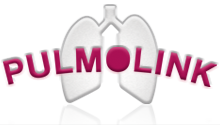What does a Pulse Oximeter tell you?
Applications of Pulse Oximetry
A Pulse Oximeter can detect hypoxia before a patient shows signs of becoming cyanotic (bluish discoloration of the skin and mucous membranes due to not enough oxygen in the blood).
For this reason, Pulse Oximeters may be used in all manner of situations but are of particular value for monitoring a patient’s oxygenation and pulse rates when undergoing surgical procedure, particularly those involving anaesthesia or conscious sedation.
They are also widely used after surgery during the recovery phase and in the ITU arena. Pulse Oximetry is used extensively on mechanically ventilated patients, as it can frequently detect problems with oxygenation before they are noticed clinically, as well as a valuable guide for weaning patients off ventilation and helping to assess the adequacy of a patient's oxygen therapy. This continuing assessment process has been instrumental in the introduction of Pulse Oximeter usage within the community and homecare environment.
Furthermore, both Handheld and Fingertip Pulse Oximeters are routinely used on the wards and in casualty departments for immediate assessment, triage and ongoing patient care.
However, using a pulse oximeter should ALWAYS be in conjunction with your own clinical judgement, whether an experienced, fully trained Medical Practitioner or a private individual checking your own “sats”.
Limitations of Pulse Oximetry
In this day and age, many of us take technology for granted and it is tempting to put our faith in it 100%. However, we can’t think of any "completely fault-free device" that is available in the 21st Century; after all, if nothing broke down, many domestic appliance technicians, garage mechanics and computer helpdesk staff would all be out of a job...!
Also, in some situations a pulse oximeter reading may not be accurate, including but not limited to the following:
- Reduced peripheral pulsatile blood flow. Perhaps caused by peripheral vasoconstriction (hypovolaemia, severe hypotension, cold, cardiac failure, some cardiac arrhythmias) or peripheral vascular disease. These result in an inadequate signal for analysis.
- Venous congestion of an arm or leg may affect readings, as can a badly positioned sensor. If the readings are lower than expected it is always worth re-positioning the probe. In general, however, if the pulse strength indicator or bargraph is good, then the reading should be accurate.
- Bright overhead lights, such as in an operating theatre, may interfere with the sensors ability to read the red or infrared light correctly and cause the oximeter to be inaccurate.
- Shivering or significant, repeated movement of the sensor may cause difficulties in picking up an adequate signal.
- Pulse oximetry struggles to distinguish between different forms of haemoglobin, such as carbo-xyhaemoglobin (haemoglobin combined with carbon monoxide) and methaemoglobin, and can prevent the oximeter working accurately.
- Nail varnish may cause falsely low readings with most Fingertip Pulse Oximeters, especially those nail varnishes coloured blue or black.
For these reasons, we must stress that any medical monitoring or measurement device should really be used to confirm what you suspect to be the case. If you think your own or a patient’s oxygen saturation level is lower than “normal”, the oximeter should be used to confirm this.
What is a "normal" reading?
But what is "normal"? Firstly, we would ask "normal for whom"?
A fit, healthy person should have an oxygen saturation level between 95% & 99%. Results lower than this, and especially below 90% may be caused by problems including lung diseases, such as COPD, breathing difficulties, cigarette smoking or circulatory problems such as excessive bleeding or blood vessel problems.
Bear in mind that pretty much all Fingertip Pulse Oximeters on the market, whether "budget" or "top-of-the-range", have an accuracy usually quoted by the manufacturers as + or - 2%. In our own independent testing, it is extremely rare for them to differ by more than 1% but it is important to remember this and not become too focused on a single "cut-off" percentage figure.
This could be further misleading as oxygen saturation measurements may also differ slightly from one part of the body to another. The fingers and toes are the most popular sites for taking pulse oximetry readings. However, these are at the extremes of the body furthest from the heart and lungs and may give readings 1 or 2 % lower than the earlobe or forehead, which are that much more central. It is important to remember this when comparing measurements obtained using different oximeters in different locations.
Perhaps the question should be "How do the readings compare with what is normally expected for the person being tested?" This approach uses the pulse oximeter as a means of checking for any changes over a period of time. This could be anything from spot-checking a few minutes every day to look at long term trends or non-stop monitoring for hour after hour to detect immediately any sudden deterioration in blood oxygenation.
Click here to choose and purchase from our full range of Fingertip Pulse Oximeters.
Click here to choose and purchase from our full range of Handheld Pulse Oximeters.
